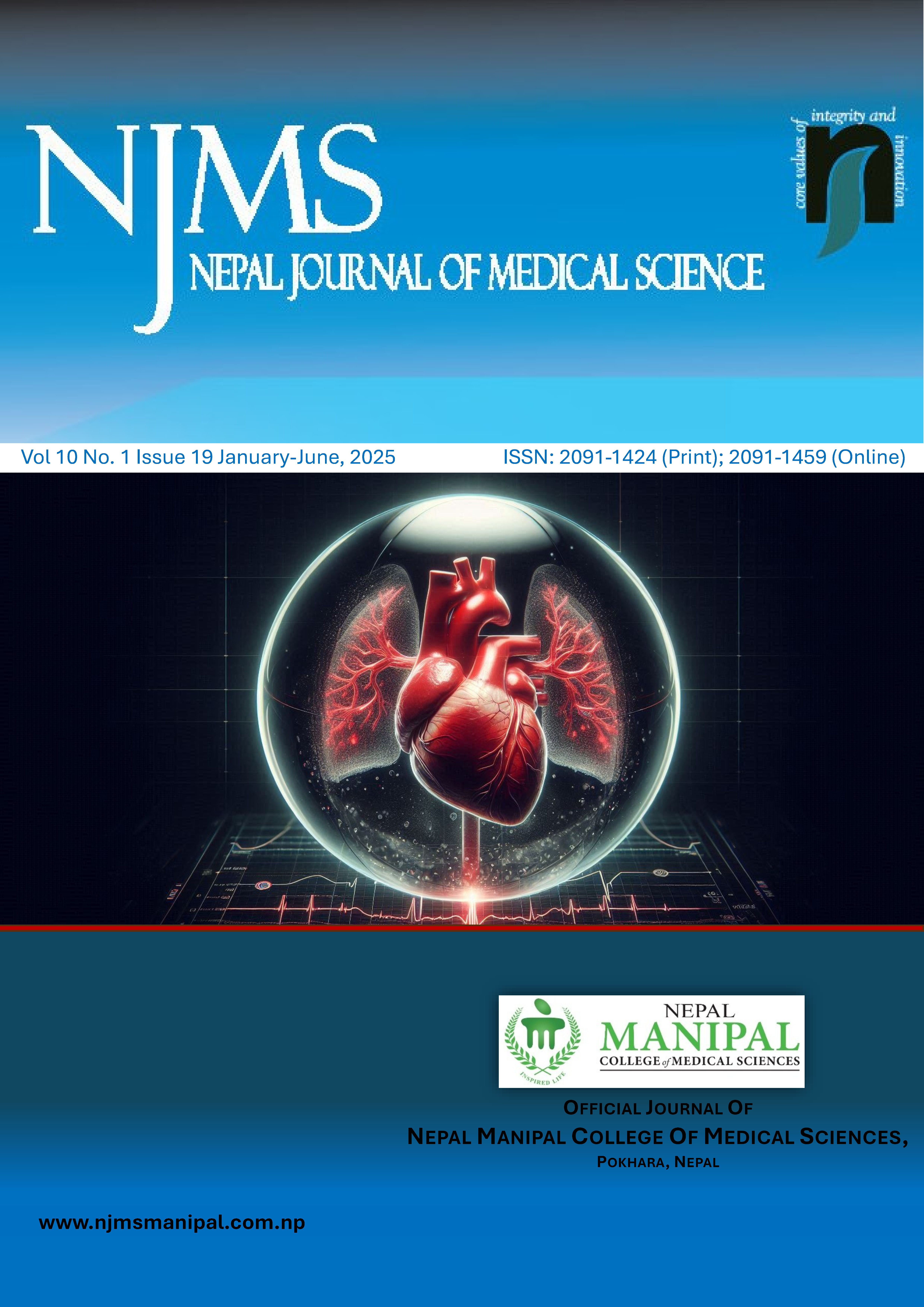Overweight and Obesity among Medical Students: Pokhara City in Western Nepal
Keywords:
BMI; Obesity; Overweight; Perceived Stress Scale.Abstract
Introduction: Obesity is on the rise. It is mainly associated with our lifestyle. Of the factors contributing to obesity stress seems to play important role as stressful situation leads to irregularity in diet, lack of exercise and addiction, each being considered independent factors leading to obesity. This study was carried out to determine the prevalence of obesity/overweight among the medical students at a medical college in Pokhara.
Methods: A cross-sectional study was done at Manipal Teaching Hospital in Pokhara from March to April 2024, with 200 third- and fourth-year medical students participating. Data was acquired using semi structured questionnaire and face to face interviews. Perceived stress scale (PSS) was used to determine the stress level. Anthropometric measurements were taken. The chi-square test and spearmen correlation were used to examine the association between the variables.
Results: Almost half 81 (40.5%) of the students were overweight (42.6% male and 37.2% female). Of these, 23 (11.5%) were obese. In 169 (84.5%) students had high perceived stress level and was also found to be significantly associated with overweight and obesity. Other characteristics including exercise, forms of exercise, and time spent watching mobile phones every day, as well as habits like eating when not hungry and smoking, were found to be strongly associated with overweight and obesity.
Conclusions: Once thought to be a matter of pride but in the era of excessive consumerism it is increasingly becoming a risk factor for many human ailments. If not addressed promptly, it has the potential to bring irreversible harm to human health.
Downloads
Downloads
Published
How to Cite
Issue
Section
License
Copyright (c) 2025 Nepal Journal of Medical Sciences

This work is licensed under a Creative Commons Attribution 4.0 International License.
Copyright © by Nepal Journal of Medical Sciences. The ideas and opinions expressed by authors of articles summarized, quoted, or published in full text in this Journal represents only opinions of authors and do not necessarily reflect the official policy of Nepal Journal of Medical Sciences or the institute with which the author(s) is (are) affiliated, unless so specified.




